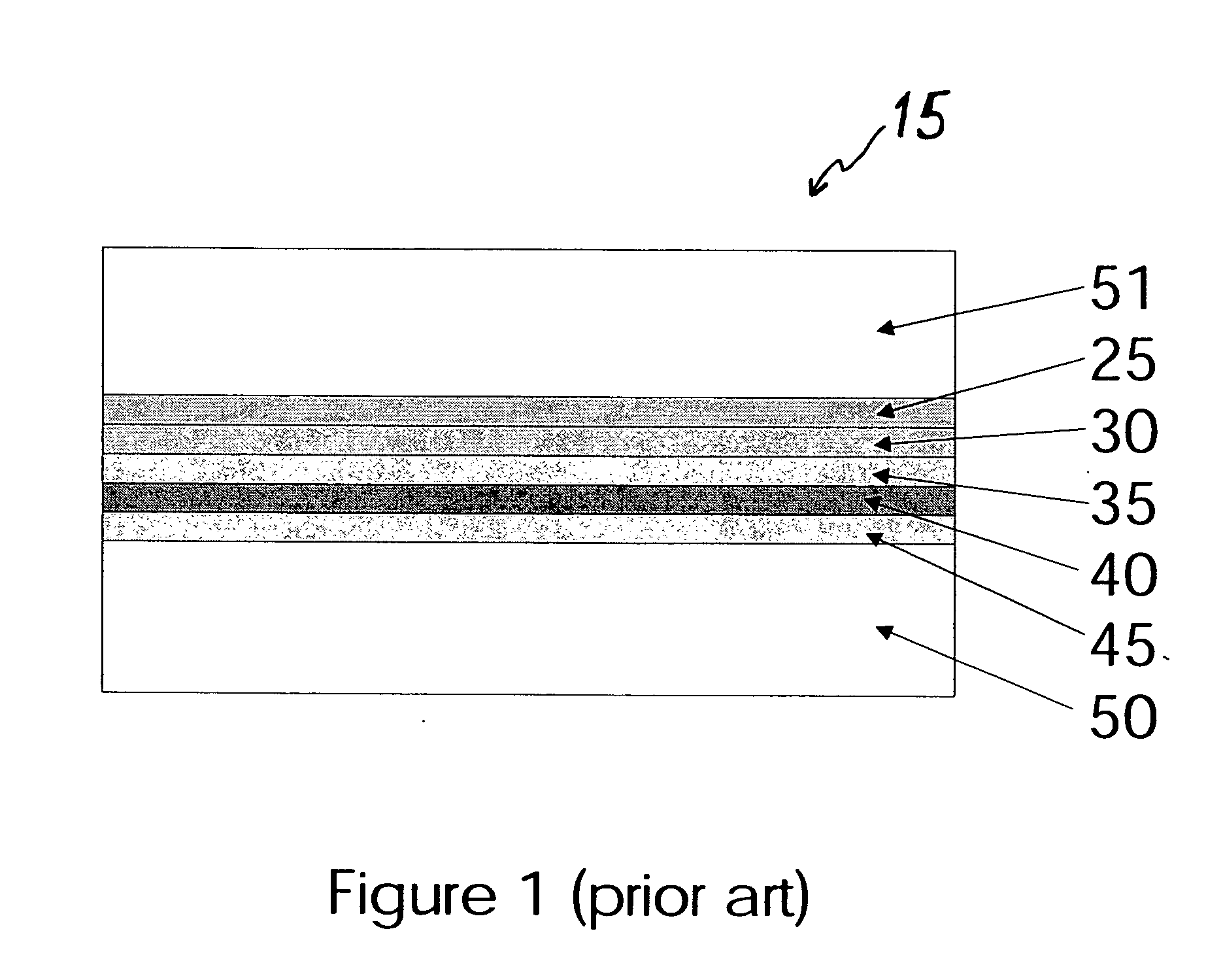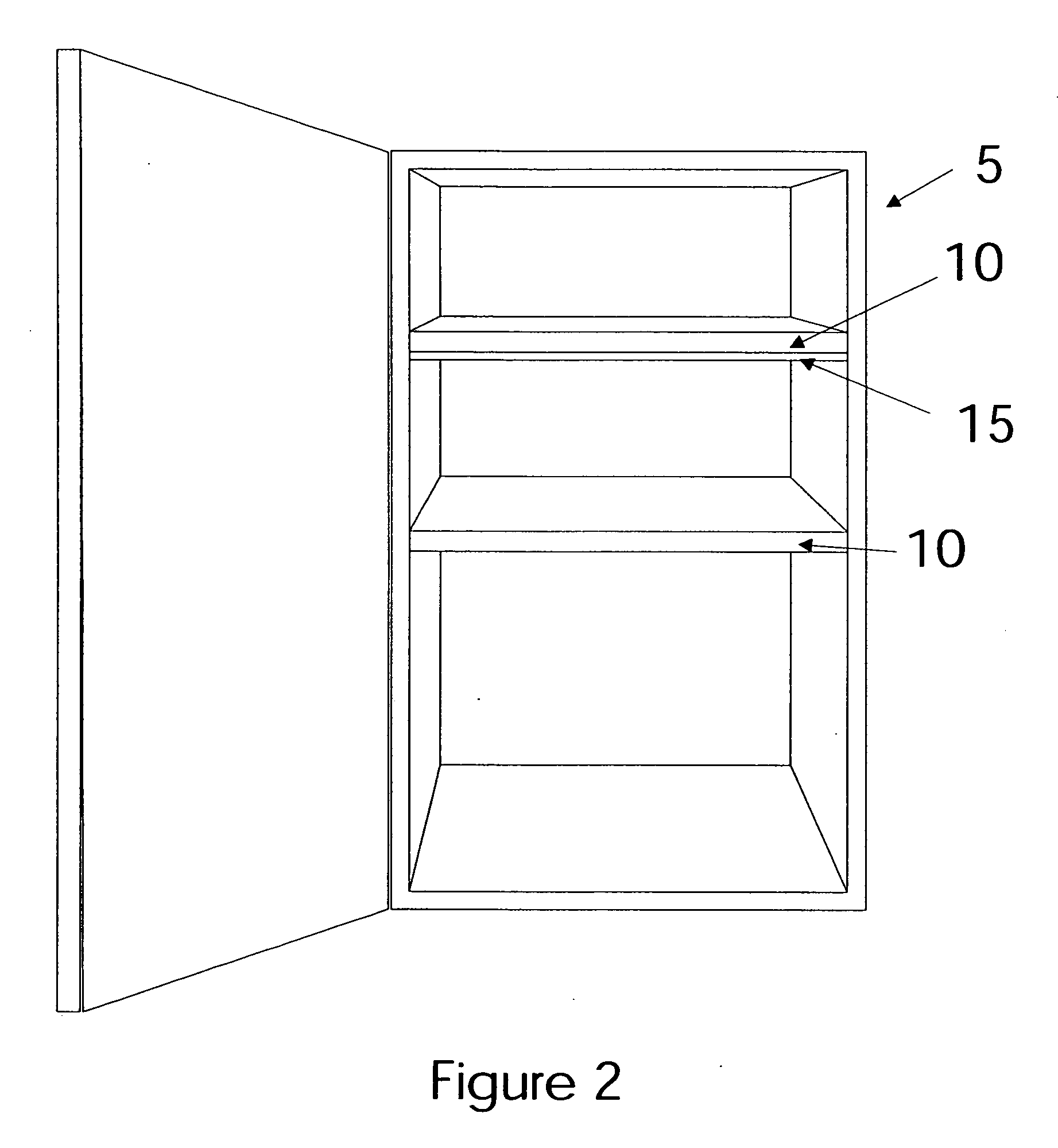Flat panel lighting for enclosed space illumination
- Summary
- Abstract
- Description
- Claims
- Application Information
AI Technical Summary
Benefits of technology
Problems solved by technology
Method used
Image
Examples
Embodiment Construction
[0012]FIG. 1 illustrates the basic structure of a flat panel light source 15 formed using organic light-emitting diode (OLED) technology. A series of thin-film layers (˜50 nm) are deposited on a substrate 50, typically glass. These layers are a cathode 25, an electron injection layer 30, an emitter layer 35, a hole injection layer 40, and an anode 45. Electrical current is applied to the anode and cathode. The current flows in the form of holes from the anode and electrons in the cathode. The holes and electrons meet and recombine in the emitter layer to emit a photon light. In practice, the entire light source 15 is encapsulated by means of a cover 51, typically comprising glass, which is sealed (not shown) to the substrate 50 at the edges. The encapsulation provides protection for the light forming layers from environmental factors such as oxygen, moisture, and the like.
[0013] Referring to FIG. 2, a cabinet 5 is shown containing two shelves 10. A flat-panel light source 15 is rem...
PUM
 Login to View More
Login to View More Abstract
Description
Claims
Application Information
 Login to View More
Login to View More - R&D
- Intellectual Property
- Life Sciences
- Materials
- Tech Scout
- Unparalleled Data Quality
- Higher Quality Content
- 60% Fewer Hallucinations
Browse by: Latest US Patents, China's latest patents, Technical Efficacy Thesaurus, Application Domain, Technology Topic, Popular Technical Reports.
© 2025 PatSnap. All rights reserved.Legal|Privacy policy|Modern Slavery Act Transparency Statement|Sitemap|About US| Contact US: help@patsnap.com



